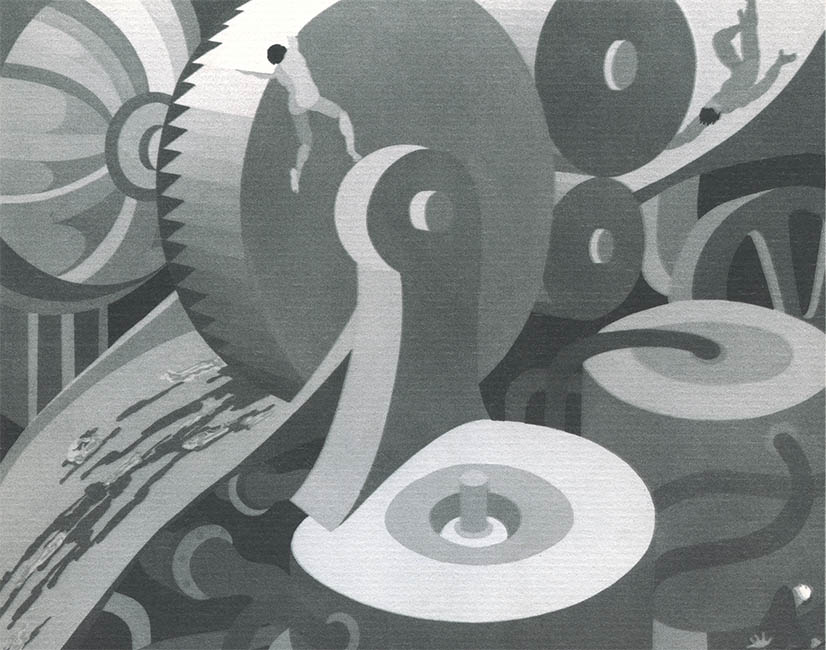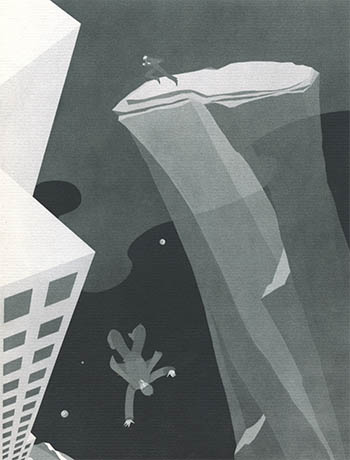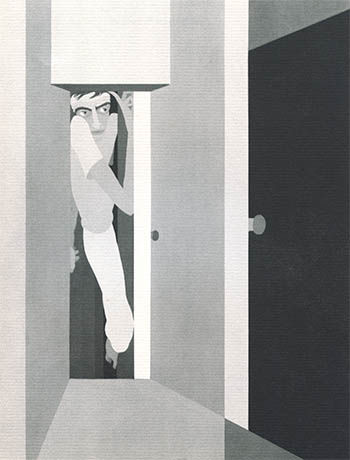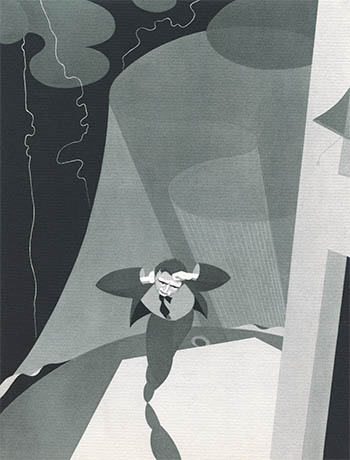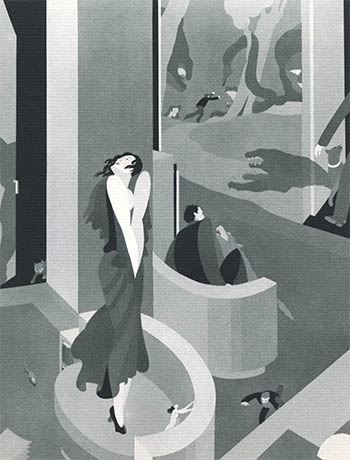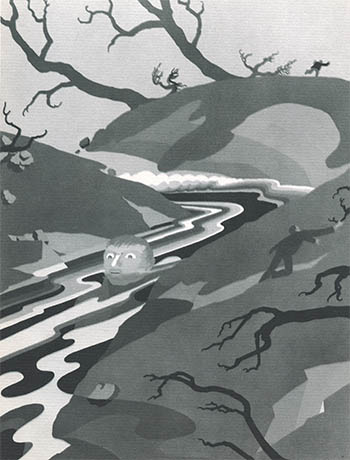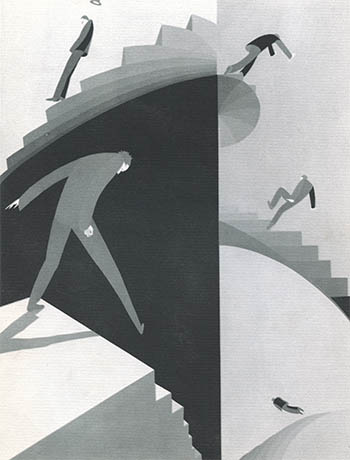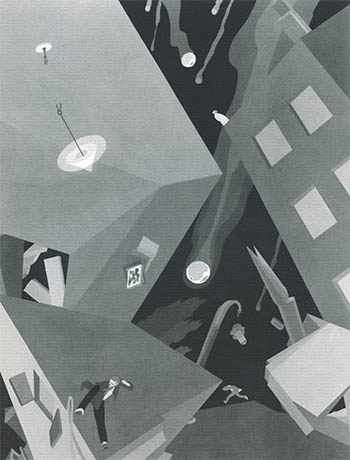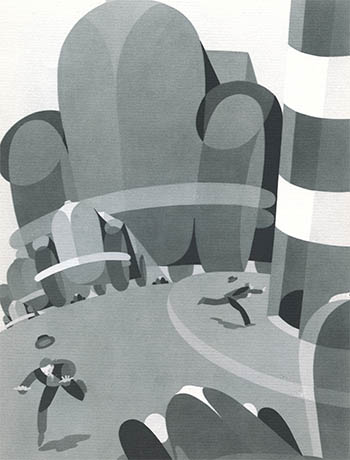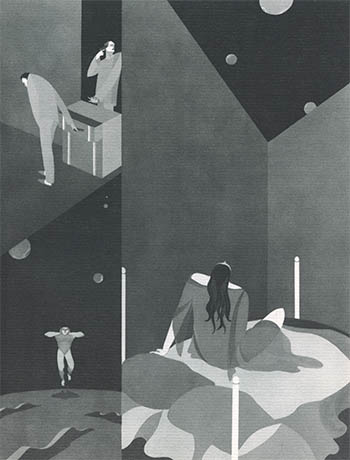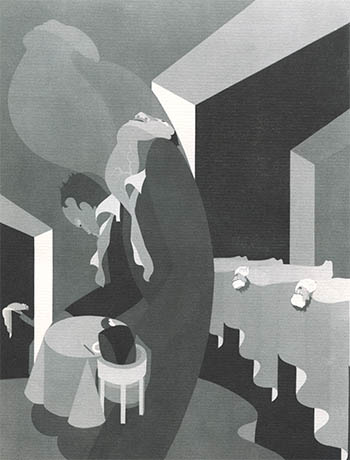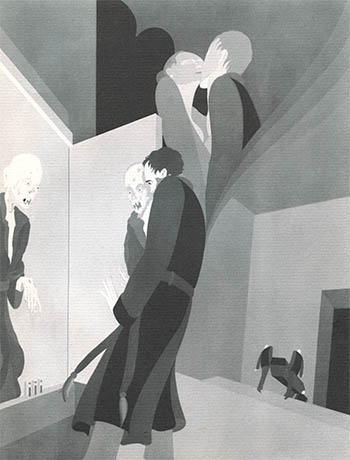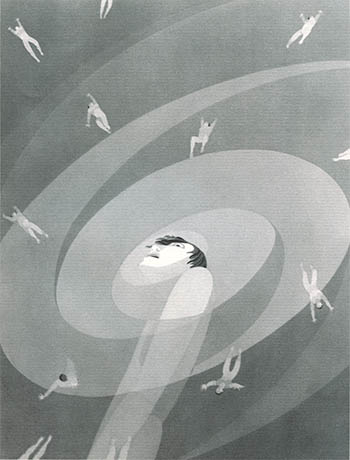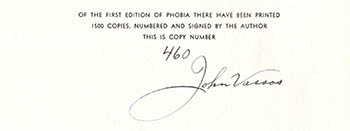111
Phobia
John Vassos
This image, a gouache painting printed by the Knudson Process,1 is a detail of John Vassos’ depiction of mechanophobia – fear of machinery (see: DSM-IV 300.29 or ICD-10 F40.2). It was one of 24 plates in his 1931 classic Phobia. The illustration – part art nouveau, part art deco and part German expressionism – shows not only a terror of machines but captures more generally the growing unease with the urbanism and industrialization of the early 20th century (a recurrent theme in much of Vassos’ work).
Acrophobia – fear of high places
Claustrophobia – fear of enclosed spaces
John Plato Vassocopoulos2 (23 Oct 1898 – 6 Dec 1985) was born in Romania to Greek parents. He grew up in Istanbul where his political cartoons for his fathers’ paper made him a target of the police. Facing possible imprisionment he emigrated to Boston where he studied at the Fenway Art School and ended up in New York where he studied at the Art Students League.3
Around 1921 he opened his own studio - the New York Display Company - which did print ads and theater/film graphics. His theater work caught the attention of the publisher E. P. Dutton, who commissioned him to illustrate Oscar Wilde’s Salome (1927). His work was compared favorably to Beardsley4 and over the next 10 years wrote and/or illustrated a dozen books including Contempo (1929), Ultimo (1930) and Phobia.
Astrophobia – fear of storms
Zoophobia – fear of animals
Potamophobia – fear of running water
The idea for Phobia came after Vassos met the noted psychoanalyst Henry Stack Sullivan during a friends nervous breakdown. He began the book with “I must began by apologizing. I am not a psychiatrist,” and he wasn’t kidding. Although it’s clear that Stack Sullivan assisted him, the text is far from current practice. Nevertheless the book, published as a limited edition, would be his defining work as an illustrator and was the conceptual basis for much of his later design work.5
Climacophobia – fear of falling down stairs
Batophobia – fear of falling objects
Dromophobia – fear of crossing the street
Monophobia – fear of being alone
Phagophobia – fear of swallowing
Syphilophobia – fear of syphilis
Vassos began dabbling in product and interior design in the mid-1920s and spent the next 40 years as an industrial designer. He created streamlined designs for Armand lotion,6 Waterman pens, Perey turnstiles, Hohner harmonicas and, beginning in 1933, for RCA radios and televisions (including the 1939 TRK-12 - the first commercially produced TV). Although he continued to do graphic design and the occasional art piece, he never illustrated another book before his death in 1985.
Pantophobia – fear of everything
1. Hugo Knudson was a Danish printer whose lithographic process, patented in 1915, was the direct fore- runner of the modern halftone.
2. He shortened his last name to Vassos when he became a naturalized US citizen in 1924.
3. For a wonderful review of Vassos career see: Schwartz, Danielle. Modernism for the Masses: The Industrial Design Of John Vassos. Archives Of American Art Journal 2006 46(1–2): 4–22, which is online.
4. Beardsley’s own version of Salome (London: Elkin Mathews & John Lane, 1894) was an art nouveau classic and his most censored work. Considering the erotic/pornographic nature of most all of Beardsley’s work that’s saying something.
5. Vassos, John. Phobia. New York: Covici Friede, 1931. The book was published as an edition of 1500 signed and numbered copies:
Some of the plates were published in Vassos, John. Contempo, Phobia, and other graphic interpretations. New York: Dover, 1976. More recently the entire book was republished as Vassos, John, Beronä, David Phobia: An Art Deco Graphic Masterpiece. New York: Dover, 2009. The scans here are from the 1931 edition.
6. His bottle design for Armand conveniently doubled as an easy to conceal flask when empty and was, not surprisingly, rather popular during prohibition.
18 Dec 2011 ‧ Illustration
